 Open Access
Open Access
ARTICLE
Optimization of Cognitive Femtocell Network via Oppositional Beetle Swarm Optimization Algorithm
1 Department of ECE, Adhiyamaan College of Engineering, Hosur, Tamilnadu, India
2 Department of EEE, K.S.R. College of Engineering, Tiruchengode, Tamilnadu, India
* Corresponding Author: K. Rajesh Kumar. Email:
Intelligent Automation & Soft Computing 2023, 36(1), 819-832. https://doi.org/10.32604/iasc.2023.030961
Received 07 April 2022; Accepted 08 June 2022; Issue published 29 September 2022
Abstract
In past decades, cellular networks have raised the usage of spectrum resources due to the victory of mobile broadband services. Mobile devices create massive data than ever before, facing the way cellular networks are installed presently for satisfying the increased traffic requirements. The development of a new exclusive spectrum offered to meet up the traffic requirements is challenging as spectrum resources are limited, hence costly. Cognitive radio technology is presented to increase the pool of existing spectrum resources for mobile users via Femtocells, placed on the top of the available macrocell network for sharing the same spectrum. Nevertheless, the concurrent reuse of spectrum resources from Femto networks poses destructive interference on macro networks. To resolve this issue, this paper introduces an optimal channel allocation model using the Oppositional Beetle Swarm Optimization Algorithm (OBSOA) to allocate the channel with interference avoidance. A new OBSOA is derived in this paper by the inclusion of opposition-based learning (OBL) in BSOA. This algorithm allocates the channels used by PUs (PUs) to the secondary users (SUs) in such a way that interference is minimized. This proposed approach is implemented in the MATrix LABoratory (MATLAB) platform. The performance of this proposed approach is evaluated in terms of several measures and the experimental outcome verified the superior nature of the OBSOA-based channel allocation model. OBSOA model has resulted in a maximum signal-to-interference-plus-noise ratio value of 86.42 dB.Keywords
In recent days, architecture as well as topology of cellular networks, undergoes drastic variations because of an excessive customer need for mobile data or the internet. In the last decades, the number of wider mobile data traffic eclipsed the traffic on the global internet in 2000, and thereby in 2015 it has been expected around one trillion people to use mobile data uniquely through mobile wireless tools [1]. To enhance the network potential as well as to face the improving data demand, massive and effective communications methods like MIMO (Multiple-Input Multiple-Output) and modern antennas, have been deployed. These smart models with scheduling method have been used for allocating resources namely, OFDMA (Orthogonal Frequency-Division Multiple Access) techniques. But, such improvements are not capable of solving the limiter bandwidth problem.
Here, Cognitive Radio (CR) methodology in the traditional cellular system has been presented to solve the bandwidth issue and maximize the set of accessible spectrum resources for mobile users under the application of Femtocells named as small cells that are overlaid on previous macrocell network, for distributing a general spectrum. A small cell solution offers a local network as well as coverage enhancement in jam closed regions and maximum actions such that people converging, or improper signal. But, with all these contrast network development and reusable spectrum distributions produce destructive interference from a macro as well as Femto systems. The Femto-BSs (Femto Base Stations) are tiny in size, cheaper, and limited energy. It has been processed under the same frequency bands as macro-cells, where the operators could apply and handle them. In contrary to macro-BSs (macro Base Stations) that are loaded based on the proper network strategy operators are constrained with minimum control than Femto-BSs, which results in a complex process to alleviate co-channel interference as well as to control the network resources. Also, spontaneous locations of Femto-BSs result in 2 types of interference from macro and Femto cellular systems: cross-tier which is an aggressor and victim of interference comes under diverse tiers whereas intra-tier states that aggressor and victim of interference are from a similar tie.
In general, the cognitive radio (CR) model can report the problems involved, by offering Femto-BS potential to detect the atmosphere, disturb the obtained signal from macro-BS and neighbouring Femto-BSs, and smartly designate spectrum resources at the time of controlling intra-tier and cross-tier interference. A group of models used to distribute and provide spectrum resources by the CR method is said to be dynamic spectrum access. It has the structure of a layered network with a registered spectrum, such that consumers with minimum priority are named as Secondary Users (SUs) and users with maximum priority are termed as primary operators (macrocell). To use the cellular band, Femtocell applies dynamic spectrum access methods: transfer along with macrocell till a final interference has been attained or make use of an unapplied channel that belongs to Processing unit.
The term interference is defined as a phenomenon that could not be removed from a wireless network, but it is easy to handle. At this point, it has been applied with regulators and finite rules for exploiting spectrum operation patterns to use a frequency band. Typically, small cells enable a reliable BS development as well as an elegant transceiver model as it is constrained with minimum communication range. Since the radio platform is assumed to be very hard, it applies a small cell which is very advantageous for users to solve localized coverage as well as to improve connectivity path at the time of offloading traffic in macrocells to Femtocells. For exploring the designed attributes, the upcoming cognitive cellular system assists in developing regular policies which help to eliminate the production of dangerous interference from the wireless network which communicates with one another and safeguard several users.
Stated that, Femtocells exploited unfilled macro cell radio resources using a game-theoretical radio resource control [2]. This model attains independent cross-tier as well as intra-tier interference reductions, however, channel detection establishes an overhead as data transmission and receiving tasks could not be processed with a limited sensing frame. It is presented with an admission control model to handle interference from 2-tier CDMA (Code-Division Multiple Access) cellular systems [3]. Later, QoS is offered with a two-tier CDMA network, but, while there is an existence of a congested network, then the admission control method is converged slowly.
A 2-tier Femtocell system could be applied by sharing spectrum to all tiers and the intermediate macrocell has been underlay with massive several Femtocells. This module is named as cognitive Femtocell network (CFN). Here, CFN could be developed efficiently as well as very expensive with 2 diverse spectrum-sharing concepts such as overlay and underlay [4]. Initially, overlay applies the model which allows a SU to transfer the corresponding data from spectrum holes while PUs does not transmit them. Femtocell user equipment leaves its channel at the time of detecting requirement to occupy from the macro user equipment. Alternatively in the underlay paradigm, Femtocell user equipment enables to perform the band of the macrocell network, and the entire interference from Femtocell user equipments occupies on a similar channel which must be under the threshold value [5]. This study focuses on allocating resources at underlay CFN while channel application depends upon the underlay cognitive transmission access model [6].
While deploying CFN, interference is assumed to be the main problem due to the overlapping area between cells from the network region as well as co-channel functions. Here, interference is divided into intra-tier where interference is made via Femto-to-Femto and macro-to-macro [7]. In particular, inter-tier interference occurs due to the application of the underlay spectrum, which has to save the macrocell network. To reduce the interference, few processes are applied in the downlink direction. Compression of intra-tier interference with the help of a coalitional game is presented in [8]. It has been developed with frequency division multiple access to area spectral effectiveness as well as intended to predictable QoS requirement [9]. Allocation of power and sub-carrier for Orthogonal Frequency Division Multiple Access (OFDMA) Femtocells depends upon the underlay cognitive radios from a 2-tier network which is defined in [10].
A self-organizing principle for external resource block designation along with QoS conditions to eliminate the co-channel as well as co-tier interference as examined in [11]. Therefore, CFN uplink with the application of the underlay model is an essential challenge that is in [12]. For uplink direction, the ability and interference elimination for a 2-tier Femtocell network was established [13]. The interference alleviation has been projected by forwarding data for macro consumers by Femto applicants, based on the coalitional game model as well as leasing channel [14]. The energy consumption below QoS and interference limitations in Femtocell networks have been revealed in [15]. Hence shared power control in the case of spectrum-sharing Femtocell network with Stackelberg game methodology is proposed in [16]. But, many classes defined in consternate on single-channel task then don’t describe channel allocation for Femto users.
In uplink interference has been assumed in OFDMA-relied Femtocell networks including incomplete co-channel development with no Femtocell consumer [17]. In addition, channel designations depend upon the auction technique in macrocell consumers as well as Femtocell users. It is noted that channel allocation has not been an effective process for users, where it cannot be reuse channels with the help of energy control.
Several studies indicated that the concurrent reuse of spectrum resources from Femto networks poses destructive interference on macro networks. For addressing the problem, this paper introduces an optimal channel allocation model using the Oppositional Beetle Swarm Optimization Algorithm (OBSOA) to allocate the channel with interference avoidance. A new OBSOA is derived in this paper by the inclusion of Opposition-Based Learning (OBL) in BSOA. This algorithm allocates the channels used by PUs to the SUs in such a way that interference is minimized. At the initial stage, the OBL model is applied for the generation of opposition-based population coming from the actual population. Once the opposition-based and original populations are compared, the optimal ones are chosen and passed to the subsequent iteration. By this procedure, the BSOA can be prevented from falling into a local optima problem. This proposed method is applied in the MATLAB platform. The proposed approach performance is evaluated in terms of several measures.
The residual portions of the study have been presented here. Section 2 describes the proposed Oppositional Beetle Swarm Optimization Algorithm (OBSOA). Section 3 tests the performance of the algorithm. In the end, Section 4 concludes the paper.
2 Proposed Oppositional Beetle Swarm Optimization Algorithm (OBSOA) Based Channel Allocation
As per early definition, CR systems are divided into 2 types such as primary (macro) as well as secondary (Femto) users, as shown in Fig. 1. These 2 users use the spectrum between them based on priority for spectrum access and conflict solution. Also, downlink interference has been assumed which is more crucial, where a downlink case is provided from this simulation region or macrocell portion several macro applicants laid in a random manner, where macro-BS is placed in middle of the covering portion. The Femtocells undergo sharing in an identical macro cell region. An Sl has been depicted by the integration of the transfer unit and reception unit and in the same way, Pl is demonstrated by the concatenation of the transmitter and a receiver. Hence, Macro-BS and Femto-BS have the potential to transmit signal in a well-known channel using maximum energy. Therefore, the energy of transmission has been balanced at a reliable stage [18].
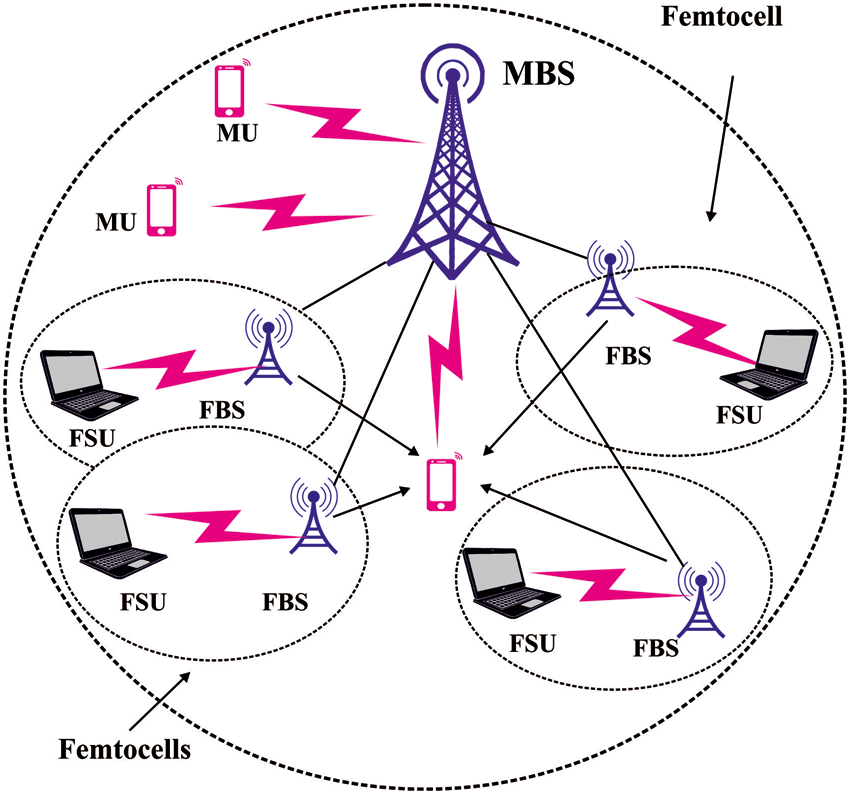
Figure 1: Architecture of femtocells in cognitive network (MBS-Macro BS, MU-Macro user, FSU-Femto user, FBS-Femto BS)
If SINR (Signal-to-interference-plus-noise ratio) is predicted with help of macro user attains more than the SINR range provides by
where
Likewise, a SINR values from reception end
where
Data values of
Data rate has been assumed as a value of efficiency of spectrum of CR network, and the main goal of allocating resources is to simulate higher data rate of network (5) by considering SINR needs of
where
2.2 Brain Storm Optimization (BSO) Algorithm
The BSO technique is considered an optimizing method that integrates the mechanism of beetle foraging as well as the Particle Swarm Optimization (PSO) approach [19]. Several works have been presented that 2 antennae of beetles have been employed to find neighboring areas. If an antenna detects highly concentrated food aromas from one side, then a beetle would move towards the antennae at the recent current side. Based on a simple biological nature, a meta-heuristic optimizing model depends upon the foraging character of beetles has been derived. It is described with the location of the beetle from S-dimensional space at t as
Here,
It is a fundamental BSO model that has been deficient while operating high definition task, as well as efficiency of an iteration has maximum vulnerability for primary location of antennae. As same as PSO model, every beetles present in BSO technique denotes a capable solution of optimizing issue, and various beetles distribute data among them. The process of improving the speed of a beetle can be measured by the trend of each beetle seeking for single extremes and tendency of BSO looking for global extreme rate. Unlike, the location upgrading of every beetles cannot be computed by expanding the speed updating and data obtained by corresponding antennae. Hence it applies loosening technique for smarter computing model.
where
2.3 Oppositional Principle of BSO Algorithm (OBSO)
In the domain of the computational process, OBL is generally applied to enhance the convergence value of several optimizing techniques. The key objective of this method is to consider the recent population and contrast the population simultaneously and derive a more optimized candidate solution. Recently, several authors have deployed the Opposition-Based Learning (OBL) technique in the population-relied optimizing model to improve the convergence value. As a result, the adverse candidate solution can be placed at the nearby global solution when compared with an arbitrary candidate solution. The contrast solution of OBL is represented by a small point of solution from the middle of the searching space, which is expressed in a mathematical format:
where
There is a point that, it OBL method is established at primary stage of BSO model and it is capable of producing opposition-relied population. Followed by, good individuals have been selected to take part in evolution of actual population as well as opposition-based population. Therefore, it improves the diversity of a population and extends the importance of BSO.
2.4 OBSO for Channel Allocation
In this section, the OBSOA model has been applied for channel allocation. Here, a vector
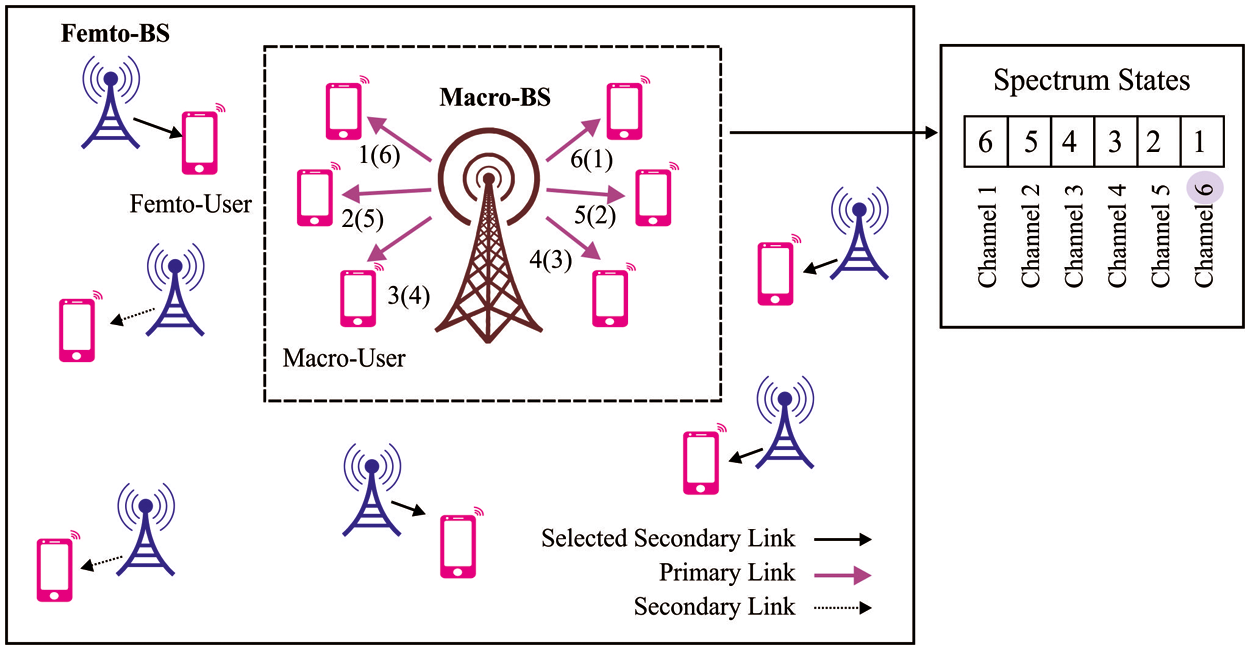
Figure 2: Architecture of proposed channel allocation process
For the identification of a collection SLs which maximizes the cognitive cellular network data rate, at the same time as the minimal SINRs threshold of every user could be offered, the proposed OBSOA is applied. The processes present in the allocation of channels are provided in Algorithm 1.
Upon analyzing a downlink scenario using the process involved in the channel allocation of OBSOA, a candidate solution
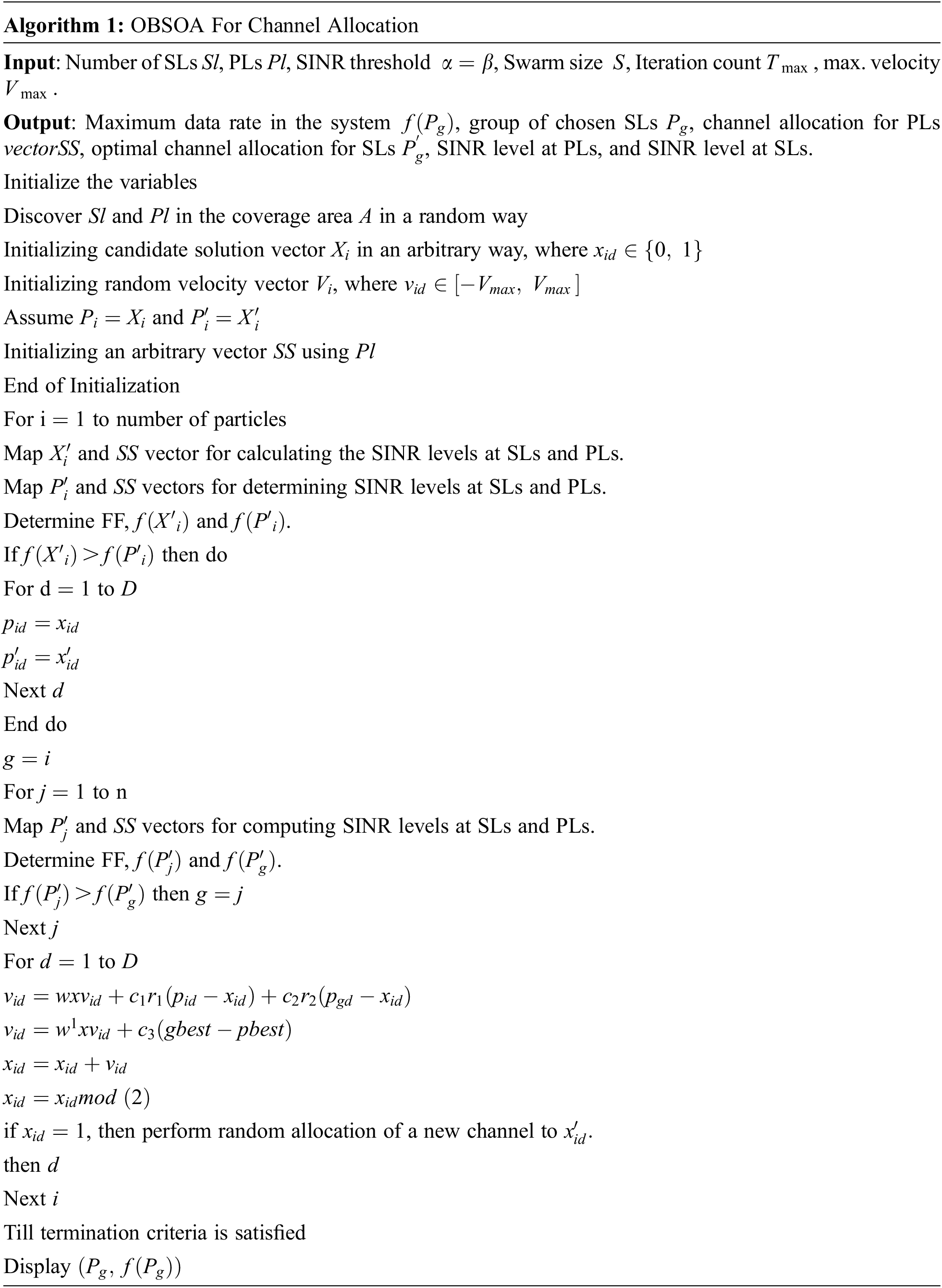
The results of the presented OBSOA have been validated by carrying out simulation in a network of 1MBS placed at the middle of the network. A set of Femto Base Station (FBS)s are placed in apartment blocks inside the communication range of Macro Base Station (MBS) coverage area, which is partitioned into a set of three regions, two blocks are placed in every sector and size are placed in other three sectors. The Macro Users (MUE)s undergo random deployment in the MBS communication range. At the same time, the femto user (FUE) undergoes deployment in the apartment blocks [20]. The intention of the OBSOA is to allocate the RBs effectively to every FUE, therefore, maximum SINR and throughput can be attained. The parameters involved in the experiments are provided in Tab. 1.

During the initial round of experimentation, FBS assigns a subset of resource blocks (RBs) at random to its interconnected Femto user equipment (FUE). Randomly allocating the resources, however, results in a suboptimal solution for RD assignment since few close FEUs will receive identical RBs [21]. As a result, both the interference level and the SINR value increase. The objective of OBSOA is to increase the SINR through the distribution of highly favourable RBs to each FUE. In the presence of the OBSOA algorithm 5 [22], the interference can be minimised and the SINR converges to a maximum value. In this instance, the parameter settings of the OBSOA method have a greater effect on the convergence of SINR.
Fig. 3 depicts the convergence analysis of the SINR for multiple models with varying iteration counts. The graph demonstrated that the presented OBSOA provided superior results than the DBFO and RA models with the highest SINR value. It is also observed that the SINR value rises as the number of iterations increases.
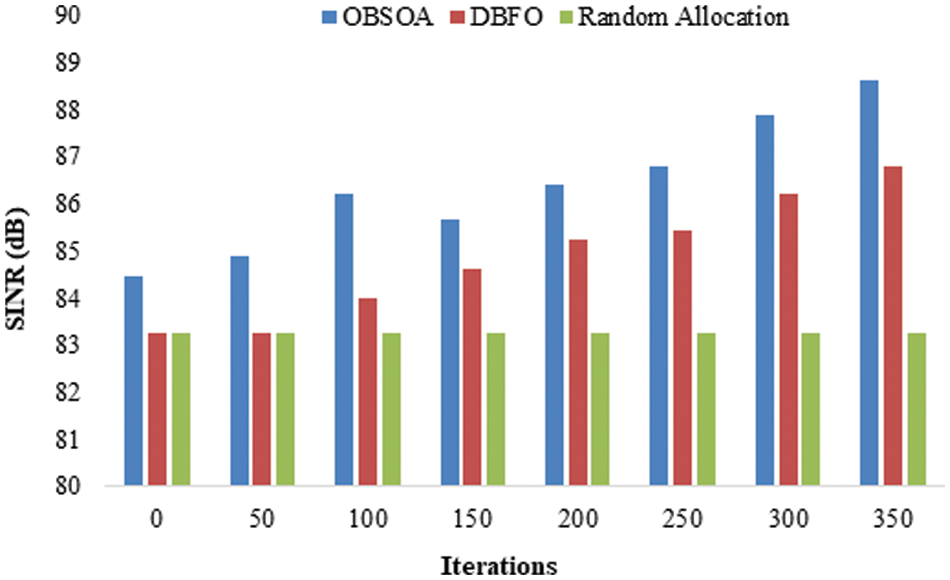
Figure 3: SINR convergence analysis
Under 50 iterations, the OBSOA obtains a maximum SINR of 84.46 dB, whilst the DBFO and RA models produce lower SINR values of 83.26 and 83.27 dB, respectively. Similarly, in the presence of 150 rounds, the OBSOA provided the highest SINR value of 85.69 percent, whilst the DBFO and RA models produced SINR values of 84.62 percent and 83.27 percent, respectively. In addition, under the presence of 250 rounds, the OBSOA boosted the SINR value to 86.82 percent, whilst the DBFO and RA models remained at the minimum SINR values of 85.46 and 83.0 percent, respectively. Under the maximum iteration count of 350, the OBSOA achieved the greatest SINR of 88.64 dB, while the DBFO and RA models achieved the lowest SINR values of 86.82 and 83.27 dB, respectively. From iteration number 0 to iteration number 350, it is obvious that the SINR value of OBSOA increases from 84.46 to 88.64 dB. These statistics clearly indicated the increase in SINR value as the number of OBSOA iterations increases.
The presented OBSOA alleviates interferences more efficiently than the DBFO and RA models. In addition, the use of OBSOA improves throughput for each FUE, resulting in higher system performance. The deployment of OBSOA to allocate RBs in Femtocell networks was subjected to experiments. The CDF analysis of the OBSOA, DBFO, and RA models under variable throughput is depicted in Fig. 4. The graph indicates that the OBSOA has obtained the lowest CDF, whereas the DBFO and RA models have the highest CDF under varied throughput conditions.
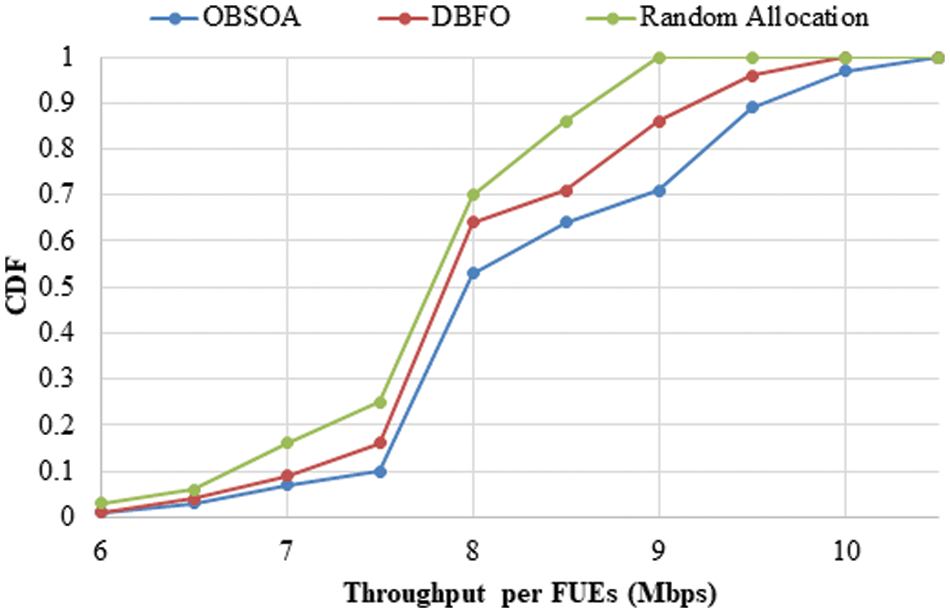
Figure 4: Cumulative distribution function (CDF) of throughput (Mbps)
The OBSOA and DBFO models have reached a minimum and identical CDF value of 0.03 Mbps under a variable throughput of 3, however the RA model has obtained a higher CDF value of 0.03 Mbps. Similarly, for the variable throughput of 7, it is observed that the OBSOA provides the lowest CDF value of 0.07 Mbps, but the DBFO and RA models produce higher values of 0.09 and 0.16 Mbps, respectively. In addition, with the variable throughput of 8, it is noted that the OBSOA provides the most effective outcomes with the lowest CDF value of 0.53 Mbps, but the DBFO and RA models lead to the highest CDF values of 0.64 and 0.7 Mbps, respectively.
Similarly, for the variable throughput of 9, the OBSOA has provided a CDF value of 0.71 Mbps, whilst the DBFO and RA models have provided CDF values of 0.86 and 1 Mbps, respectively. Under the maximum throughput of 1, the OBSOA nevertheless achieves a lesser PDF of 0.97 Mbps than the existing DBFO and RA models, which both reach a maximum and identical PDF of 1 Mbps. It may also be gathered from the graph that the PDF increases as throughput increases.
Tab. 2 and Fig. 5 indicate the influence of SINR after 350 rounds have been completed. It is obvious from the chart that the RA has demonstrated its ineffectiveness, as indicated by the lowest SINR value of 73 dB. In addition, the DPSO algorithm achieved a SINR value of 79.36 dB, which is marginally superior to RA’s values in terms. Although the DPSO beat the RA model, it failed to demonstrate superior efficacy over other approaches. The continued efforts of the DBFO model have resulted in a high SINR value of 81.92 dB. Curiously, the proposed OBSOA model has produced a maximum SINR value of 83.64 dB. The greatest SINR value provided by the OBSOA implied a significant performance advantage over other approaches.

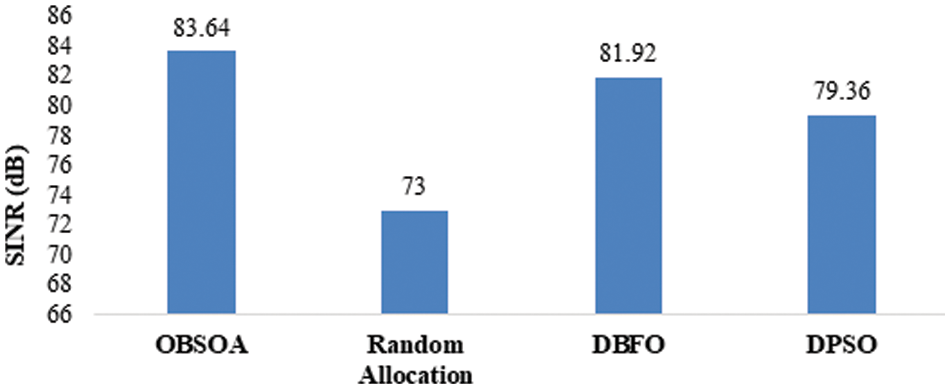
Figure 5: SINR analysis after 350 iterations
Tab. 3 and Fig. 6 examine the outcome of the OBSOA and existing methods interms of SINR after the completion of 350 rounds. From the table, it is evident that the RA has showed its ineffectiveness and is ensured from the least SINR value of 73.14 dB. At the same time, the DBFO algorithm has offered slightly better performance over RA by achieving a SINR value of 82.97 dB.

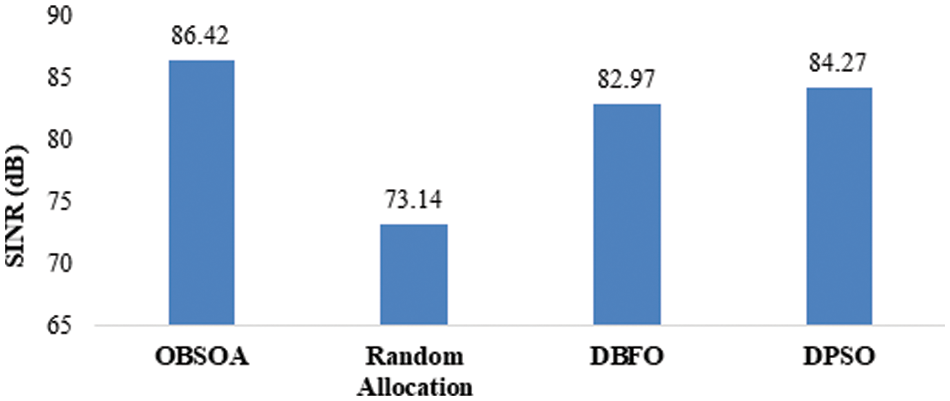
Figure 6: SINR analysis after 2250 iterations
Although the DBFO model outperformed the RA model, it failed to outperform other approaches. In accordance with this, the DPSO model has achieved a SINR value of 84.27 dB, which is a high value. The proposed OBSOA model has resulted in a maximum SINR value of 86.42 dB, which is evident. After studying the simulation results in depth, it is established that the presented OBSOA has provided superior outcomes than the other models.
Fig. 7 depicts the channel use analysis of numerous models with varying call arrival rates. The illustration demonstrates that the suggested DPSO model utilises channels more effectively than the evaluated techniques. The RA model is proven to have the lowest channel consumption among the compared techniques. In continuation, the DBFO and DPSO models demand channel utilisation that is superior to the RA model and nearly identical to the DPSO model, but not greater than the OBSOA model. However, the proposed model gives significantly more channel utilisation than the compared techniques.
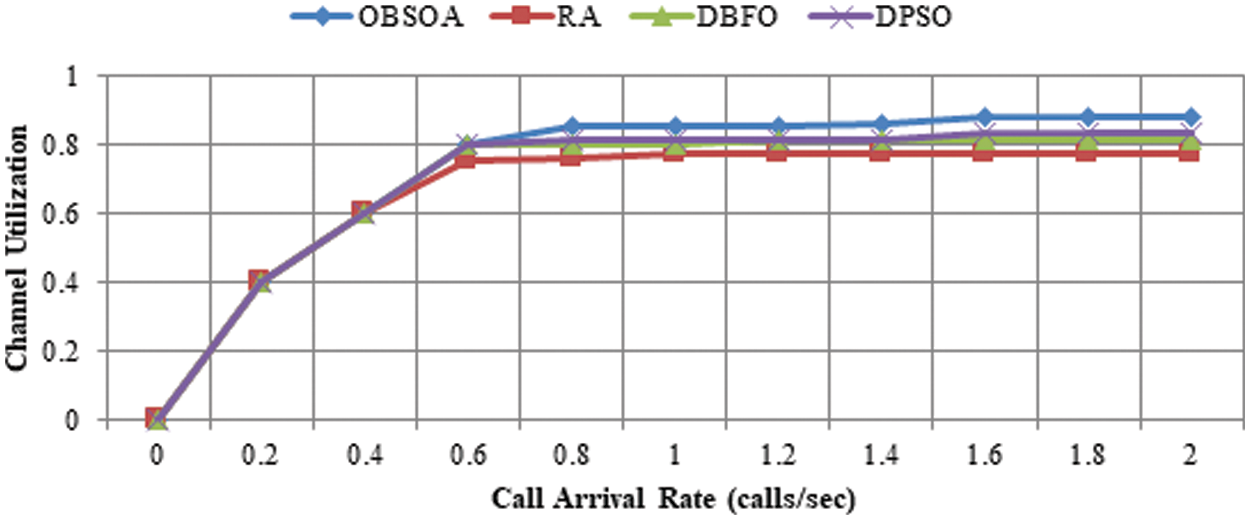
Figure 7: Channel utilization analysis
Fig. 8 depicts a study of the Call Blocking Probability for multiple models with varying call arrival rates. The graph illustrates that the suggested DPSO model has the lowest Call Blocking Probability compared to the compared techniques. The RA model has the highest Call Blocking Probability among the studied techniques. Continuing, the DBFO and DPSO models demand a Call Blocking Probability that is lower and nearly identical to that of the RA model, but not lower than that of the OBSOA model. However, the proposed model delivers a significantly lower Call Blocking Probability than the compared techniques. The OBSOA model offers the lowest probability of call blockage. However, when the number of incoming calls increases, the proposed technique blocks fewer calls. The achieved experimental analysis clearly demonstrated the effectiveness of the OBSOA model across a variety of performance metrics.
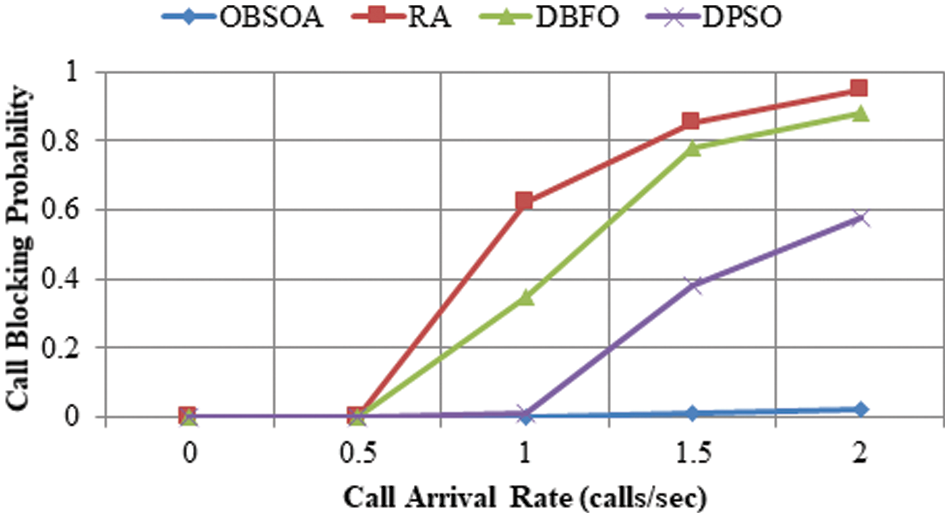
Figure 8: Call blocking probability analysis
This paper has presented an optimal channel allocation model using OBSOA to allocate the channel with interference avoidance. This algorithm allocates the channels used by PUs to the SUs in such a way that interference is minimized. At the initial stage, the OBL model is applied for the generation of an opposition-based population coming from the actual population. Once the opposition-based and original populations are compared, the optimal ones are chosen and passed to the subsequent iteration. By this procedure, the BSOA can be prevented from falling into a local optima problem. This proposed approach is implemented in the MATLAB platform. The performance of this proposed approach is evaluated in terms of several measures and the experimental outcome verified the superior nature of the OBSOA-based channel allocation model. The proposed OBSOA model has resulted in a maximum SINR value of 86.42 dB. Therefore, in the next work, we will further study the impact of different parameter settings on BSO.
Acknowledgement: The authors with a deep sense of gratitude would thank the supervisor for his guidance and constant support rendered during this research.
Funding Statement: The authors received no specific funding for this study.
Conflicts of Interest: The authors declare that they have no conflicts of interest to report regarding the present study.
References
1. Y. Mu, B. Li, D. An and Y. Wei, “Three-dimensional route planning based on the beetle swarm optimization algorithm,” IEEE Access, vol. 7, pp. 117804–117813, 2019. [Google Scholar]
2. H. Lalin, I. W. Mustika and N. A. Setiawan, “Discrete bacterial foraging optimization for resource allocation in macrocell-femtocell networks,” ETRI Journal, vol. 40, no. 6, pp. 726–735, 2018. [Google Scholar]
3. C. T. Do, D. N. M. Dang, T. LeAnh, N. H. Tran, R. Haw et al., “Power control under QoS and interference constraint in femtocell cognitive networks,” in Proc. of the Int. Conf. on Information Networking 2014 (ICOIN2014), Phuket, Thailand, pp. 292–297, 2014. [Google Scholar]
4. J. G. Andrews, H. Claussen, M. Dohler, S. Ranganand and M. C. Reed, “Femtocells: Past, present, and future,” IEEE Journal on Selected Areas in Communications, vol. 30, no. 3, pp. 497–508, 2012. [Google Scholar]
5. S. Y. Lien, Y. Y. Lin and K. C. Chen, “Cognitive and game-theoretical radio resource management for autonomous femtocells with QoS guarantees,” IEEE Transactions on Wireless Communications, vol. 10, no. 7, pp. 2196–2206, 2011. [Google Scholar]
6. D. T. Ngo, L. B. Le, T. Le-Ngoc, E. Hossain and D. I. Kim, “Distributed interference management in two-tier CDMA femtocell networks,” IEEE Transactions on Wireless Communications, vol. 11, no. 3, pp. 979–989, 2012. [Google Scholar]
7. L. Huang, G. Zhu and X. Du, “Cognitive femtocell networks: An opportunistic spectrum access for future indoor wireless coverage,” IEEE Wireless Communications, vol. 20, no. 2, pp. 44–51, 2013. [Google Scholar]
8. A. Ahilan, G. Manogaran, C. Raja, S. Kadry, S. N. Kumar et al., “Segmentation by fractional order darwinian particle swarm optimization based multilevel thresholding and improved lossless prediction based compression algorithm for medical images,” IEEE Access, vol. 7, pp. 89570–89580, 2019. [Google Scholar]
9. M. Bennis, M. Debbah and A. Chair, “On spectrum sharing with underlaid femtocell networks,” in Proc. of the 2010 IEEE 21st Int. Symp. on Personal, Indoor and Mobile Radio Communications Workshops, Istanbul, Turkey, pp. 185–190, 2010. [Google Scholar]
10. Z. Shi, M. Reed and M. Zhao, “On uplink interference scenarios in two-tier macro and femto co-existing UMTS networks,” EURASIP Journal on Wireless Communications and Networking, vol. 2010, pp. 1–8, 2010. [Google Scholar]
11. F. Pantisano, M. Bennis, W. Saad, M. Debbah and M. Latva-aho, “Interference alignment for cooperative femtocell networks: A game-theoretic approach,” IEEE Transactions on Mobile Computing, vol. 12, no. 11, pp. 2233–2246, 2013. [Google Scholar]
12. V. Chandrasekhar and J. G. Andrews, “Spectrum allocation in tiered cellular networks,” IEEE Transactions on Communications, vol. 57, no. 10, pp. 3059–3068, 2009. [Google Scholar]
13. N. K. Gupta and A. Banerjee, “Power and subcarrier allocation for OFDMA femto-cell based underlay cognitive radio in a two-tier network,” in Proc. of the2011 IEEE 5th Int. Conf. on Internet Multimedia Systems Architecture and Application, Bangalore, India, pp. 1–6, 2011. [Google Scholar]
14. Y. Liang, W. Chung, G. Ni, I. Chen, H. Zhang et al., “Resource allocation with interference avoidance in OFDMA femtocell networks,” IEEE Transactions on Vehicular Technology, vol. 61, no. 5, pp. 2243–2255, 2012. [Google Scholar]
15. T. Nakamura, S. Nagata, A. Benjebbour, Y. Kishiyama, T. Hai et al., “Trends in small cell enhancements in LTE advanced,” IEEE Communications Magazine, vol. 51, no. 2, pp. 98–105, 2013. [Google Scholar]
16. V. Chandrasekhar and J. G. Andrews, “Uplink capacity and interference avoidance for two-tier femtocell networks,” IEEE Transactions on Wireless Communications, vol. 8, no. 7, pp. 3498–3509, 2009. [Google Scholar]
17. F. Pantisano, M. Bennis, W. Saad and M. Debbah, “Spectrum leasing as an incentive towards uplink macrocell and femtocell cooperation,” IEEE Journal on Selected Areas in Communications, vol. 30, no. 3, pp. 617–630, 2012. [Google Scholar]
18. X. Kang, Y. Liang and H. K. Garg, “Distributed power control for spectrum-sharing femtocell networks using stackelberg game,” in Proc. of the 2011 IEEE Int. Conf. on Communications (ICC), Kyoto, Japan, pp. 1–5, 2011. [Google Scholar]
19. Y. Sun, R. P. Jover and X. Wang, “Uplink interference mitigation for OFDMA femtocell networks,” IEEE Transactions on Wireless Communications, vol. 11, no. 2, pp. 614–625, 2012. [Google Scholar]
20. A. Martínez-Vargas, Á. G. Andrade, R. Sepúlveda and O. Montiel-Ross, “An admission control and channel allocation algorithm based on particle swarm optimization for cognitive cellular networks,” Recent Advances on Hybrid Approaches for Designing Intelligent Systems, vol. 547, pp. 151–162, 2014. [Google Scholar]
21. R. Velumaniand and M. Vijayakumar, “Retracted article: IoT based prudent automatic falls detection for elders by analyzing carrier state information (CSI) employing Wi-Fi devices,” Wireless Personal Communications, vol. 113, no. 4, pp. 2747–2748, 2020. [Google Scholar]
22. R. Velumaniand and M. Vijayakumar, “Prudent automatic falls detection by analyzing the carrier state information signal using Wi-Fi devices,” Journal of Testing and Evaluation, vol. 47, no. 4, pp. 2947–2963, 2018. [Google Scholar]
Cite This Article
 Copyright © 2023 The Author(s). Published by Tech Science Press.
Copyright © 2023 The Author(s). Published by Tech Science Press.This work is licensed under a Creative Commons Attribution 4.0 International License , which permits unrestricted use, distribution, and reproduction in any medium, provided the original work is properly cited.


 Submit a Paper
Submit a Paper Propose a Special lssue
Propose a Special lssue View Full Text
View Full Text Download PDF
Download PDF Downloads
Downloads
 Citation Tools
Citation Tools